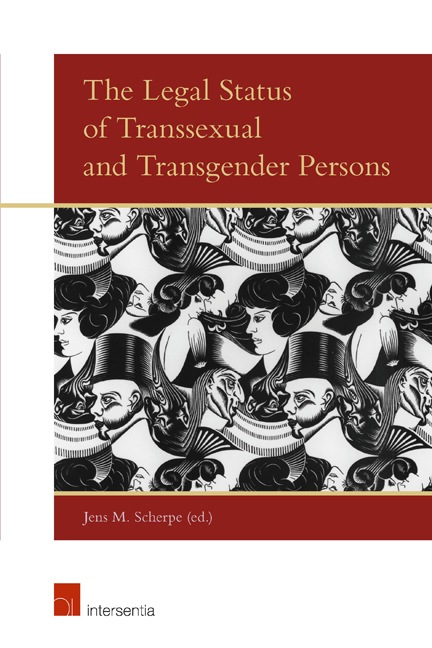Book contents
Japan
from Asia
Published online by Cambridge University Press: 28 November 2017
Summary
LEGAL FRAMEWORK AND STATISTICS
LEGAL RULES FOR TRANSGENDER AND TRANSSEXUAL PERSONS
Introduction
Japan has traditionally had a unique transgender subculture, with often mystic bisexual figures in mythology and shamanism. During the period of feudalism, cross-dressing or transcending gender was not unusual, such as in kabuki theatres where female roles generally were played by male actors. Despite modernisation since the 1868 Meiji Restoration, the transgender subculture has in fact endured in kabuki, no, and even in pop culture. Yet, notwithstanding this tradition, institutionalising medical and legal measures for transgender and transsexual persons has been a long process. While the legal recognition of preferred gender has been enabled by the Law Concerning Special Rules Regarding Sex Status of a Person with Gender Identity Disorder (GID Act) of 16 July 2003, coming into force one year later, a series of questions remain with regard to its requirements, procedure and legal effects.
Pursuant to Article 2 GID Act, ‘gender identity disorder’ (sei doitsusei shogai (GID)) is defined as the state of ‘a person who, against his/her defined biological sex, has the persistent conviction that he/she psychologically belongs to the opposite sex and has a will to make himself/herself into physical and social conformity with the opposite sex; provided that two or more physicians, who have experience and expertise required to properly make such a diagnosis, should make the same diagnosis on the subject concerned based upon generally accepted medical standards’. This legal definition of GID aims to identify those transgender persons who are eligible to request the legal recognition of their preferred gender in the Family Court from a substantive and procedural perspective. The Japanese legislature consciously chose a narrow definition of GID, seeking to avoid catering to an excessively wide scope of applications and to subject the legal gender recognition to a thorough and careful examination.
The nomenclature of GID has since then been established as legal and medical terminology in Japan, along the lines of F64 of the ICD-10 adopted by the World Health Organization in 1992 (last revised in 2010). In the international arena, however, GID has increasingly been criticised as discriminatory and stigmatising. Hence, following suggestions by the World Professional Association for Transgender Health, the American Psychiatric Association has now substituted GID with ‘gender dysphoria’ in its DSM-5 (2013) to ensure clinical care and clarify that gender nonconformity is not, in itself, a mental disorder.
- Type
- Chapter
- Information
- The Legal Status of Transsexual and Transgender Persons , pp. 363 - 390Publisher: IntersentiaPrint publication year: 2015

